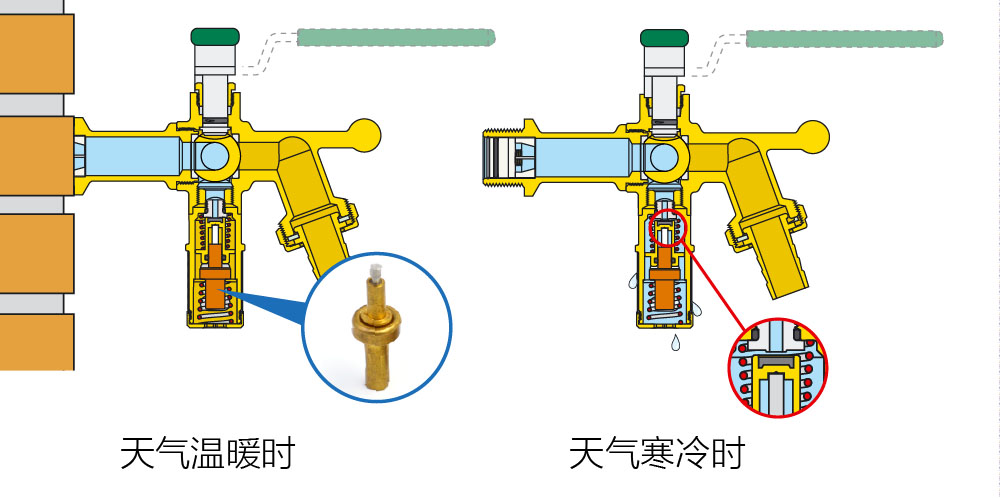According to the designed fuzzy controller, thermostatic element the actual experiment is carried out on the THBDC experimental platform, and the theoretical design is applied to the actual object. The experimental results show that the designed fuzzy control has certain application value. At the same time, the THBDC experimental results of the fuzzy control and the simulation results of MATLAB are compared. The results show that the fuzzy control achieves the desired control effect. Nowadays, the control process is becoming more and more complex, and the controlled object and process become more and more complex and large-scale, which makes it very difficult to design, analyze and control the system effectively.
Conventional control methods and control theory can not solve this kind of problem. Fuzzy control is an effective method to solve the control problem of model uncertain systems because it does not need to determine the model of the controlled object. However, the characteristic of MATLAB software is that it gathers numerical analysis, matrix operation, signal processing and graphics display together, which provides a convenient environment for users. Its powerful expansion function provides a convenient basis for the design of fuzzy control. The second-order system is used as the controlled object, which has the characteristics of pure lag.

The design of a fuzzy controller is a two-dimensional one. The control requirement is to achieve short adjustment time and small overshoot of system response curve. Fuzzy control method is used to observe its control performance. The most important component of the system is the fuzzy controller, whose inputs are e and de respectively. Firstly, the E and de are quantified and then input into the fuzzy controller, which is used in the fuzzy decision-making of the fuzzy controller. That is to say, the value of the fuzzy control quantity Uij is obtained from the relationship among E, dE and fuzzy control rule R.
Observed from the above formula, it can be seen that it is difficult to apply to the actual system. Because R is a high-order matrix, it takes a lot of time to complete its operation, so the real-time performance of the system is poor.

Therefore, in the practical application, we generally use the look-up table method. Look-up table method is the basic idea: first, through off-line calculation, secondly, establish a fuzzy control table, and finally store it in the memory of the computer. When the fuzzy controller works, the computer only needs to find the quantized value of the output control according to the quantized value of real-time error e[3] and the quantized value of error change de, then multiply the quantized value by the proportional factor K3, so that the value of the actual control quantity u(k) can be obtained. The experimental platform of the fuzzy control system consists of three main modules: THBDC-1 automatic control theory experimental platform, THBXD data acquisition card and micro-computer. The data acquisition part uses USB data acquisition card, which is commonly used in laboratories to communicate. The sampling frequency is 350 Khz, the conversion accuracy is 14 bits for 16-way single-input A/D simulation, 12 bits for 4-way output D/A simulation, 16-way switch input and 16-way switch output.
The micro-computer is equipped with “THBDC” software, which has many functions, such as virtual oscilloscope, integrated signal generator, script editor, MATLAB software simulation, experiment report generation and so on. Among them, all kinds of waveforms can be displayed by virtual oscilloscope. There are three different graphics display modes: X-T, X-Y and Bode. They have powerful functions, such as graphics storage, data analysis and printing. The script programmer provides an open programming environment to users, and users can write various controls on the editor. The algorithm and program of the system. Open the main switch of the power supply on the experimental operation platform, and set the zero-locking switch on the zero-locking unit to the state of “unlock”. Select the debug menu on the script editor window, then select the “stop” item of its secondary menu, change the range of the value of K3 in the program statement “op1 = OP1 K3 * op” appropriately, and then select its “start” item. Finally, the virtual oscilloscope is used to observe the change trend of the response curve and to determine whether it is the change of the output response curve.
MATLAB simulation response curve. THBDC experimental response curve. Comparing these two curves, Table 1 below can be obtained. The analysis shows that, compared with THBDC experimental platform, both of them have no overshoot and can meet the requirements, but the response curve obtained by MATLAB simulation has fast response speed, short adjustment time and small system steady-state error. According to the characteristics of non-linearity and time-varying of the controlled object, a two-dimensional fuzzy controller is designed in this paper. The controlled object is studied theoretically and experimentally, and satisfactory results are obtained. The main results of this study are as follows: Based on the simulation of MATLAB, the fuzzy control system is developed on the THBDC experimental platform.
Step by step verification, according to the simulation results of MATLAB, the program is edited in the script and the experiment is carried out. By changing the quantization factor and proportion factor, the parameter characteristics of the fuzzy controller are analyzed. Finally, it is proved that the fuzzy controller can make the performance index of the controlled object within the allowable range.
